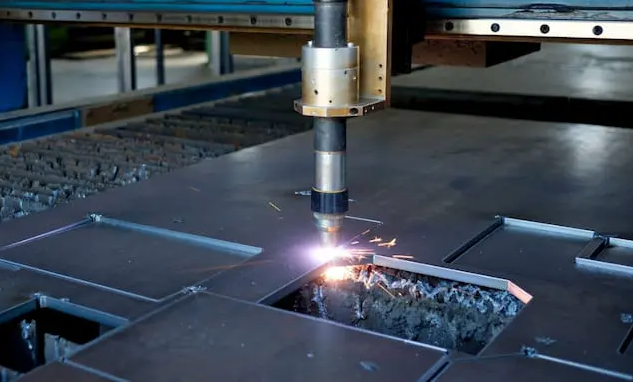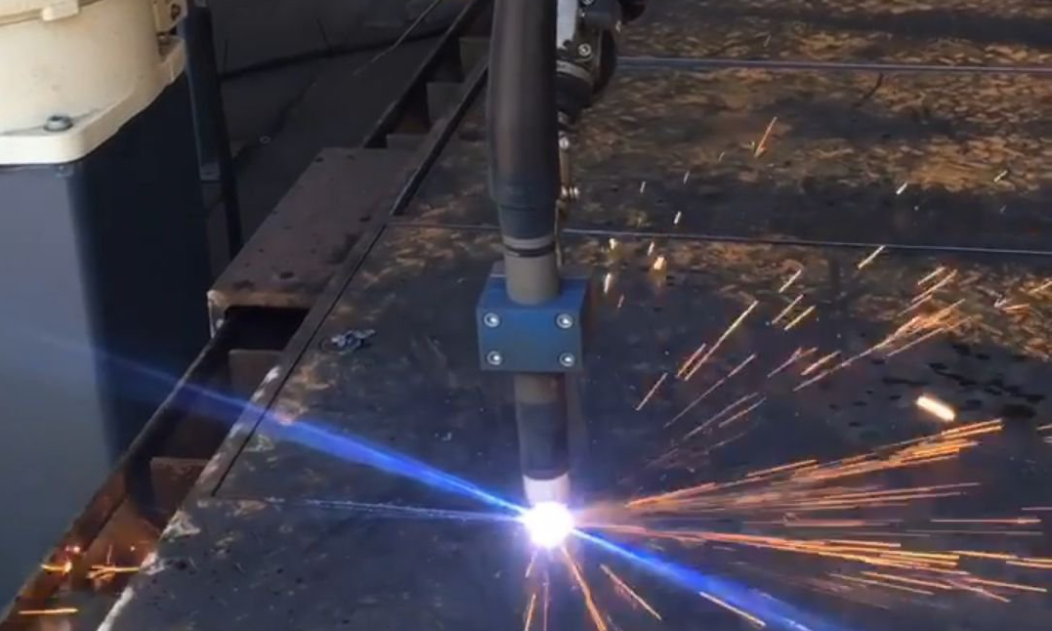Plasma welding’s main disadvantage is its high initial equipment cost and complex technical requirements
Understanding Plasma Welding
Plasma welding, an evolution of the Tungsten Inert Gas (TIG) welding process, uses an electric arc formed between an electrode and the workpiece to create a concentrated plasma arc. This process allows for deep penetration with narrower weld profiles. Now, let’s delve deeper into the basics of this process and its key components.

The Basics of Plasma Welding Process
Plasma welding can be broadly categorized into two main types based on the way the arc is formed: microplasma and macroplasma.
- Microplasma Welding: This process operates at welding currents typically below 15 amperes. It is best suited for thin sheets and fine wires.
- Macroplasma Welding: Used for thicker materials, this technique operates at currents generally above 100 amperes.
The actual welding process begins with the electrode initiating an arc within the body of the torch. This arc is then constricted as it passes through a fine-bore copper nozzle, increasing its temperature and energy density. The resulting high-velocity and concentrated plasma jet is what welds the material.
Here are the typical steps involved:
- The plasma gas (often argon) flows around the electrode and through the nozzle.
- A pilot arc forms initially between the electrode and the nozzle due to the electrical potential difference.
- This pilot arc ionizes the gas, turning it into plasma.
- The main arc then transfers from the electrode to the workpiece, facilitated by the plasma. This is where the actual welding occurs.
Key Components and Functionality
- Electrode: Typically made of tungsten, this component is responsible for initiating the arc. The electrode quality and condition directly influence the stability of the plasma arc.
- Nozzle: Made of copper, the nozzle constricts the arc, increasing its temperature. It’s crucial for directing the plasma jet accurately onto the workpiece.
- Shielding Gas: Often argon or a mix of argon and hydrogen, the shielding gas protects the weld pool from contaminants in the surrounding air.
- Power Supply: A consistent power supply is vital for maintaining a stable arc throughout the welding process.
- Water Cooling System: Given the high temperatures of plasma welding, many torch designs incorporate a water cooling system to prevent overheating.
Main Disadvantages of Plasma Welding
Plasma welding, despite its precision and capability to produce high-quality welds, is not devoid of challenges. While it remains a preferred method for specific applications, several disadvantages might sway users to opt for alternative welding techniques. Here’s a breakdown of these drawbacks.
Cost Implications
Plasma welding’s financial demands can be daunting for both newcomers and even established outfits looking to diversify their capabilities.
- Initial Equipment Costs: Purchasing plasma welding equipment is notably pricier than most other welding apparatus. The high cost is due to the intricate technology and precision mechanisms inherent to the system. For businesses or hobbyists on a budget, this initial investment can be quite steep.
- Maintenance and Consumable Costs: While all welding techniques require consumables, plasma welding can be more demanding. From nozzles to electrodes and even the shielding gases, the ongoing costs can stack up. Moreover, maintenance isn’t cheap either. Given the system’s sophistication, specialized services or parts might be needed, which again drives up costs.
Technical Challenges
The operational complexity of plasma welding introduces its own set of challenges.
- Precision Requirements: The success of plasma welding is largely contingent on the accuracy of the process. Any slight deviation or error can lead to suboptimal results, demanding a steeper learning curve for operators.
- Complexity in Setup: Compared to more straightforward methods like MIG welding, setting up a plasma welding system can be intricate. It requires a keen understanding of the system, careful calibration, and often, repeated adjustments to strike the right balance.
Limitations in Material Compatibility
Plasma welding, though versatile, is not universal. There are specific materials or combinations thereof that don’t lend themselves well to the plasma process, restricting its applicability in diverse scenarios.
Safety Concerns
Every welding method brings its safety considerations, and plasma welding is no exception.
- Exposure to High Temperatures: The intense heat of the plasma arc means a heightened risk of burns or material damage. Proper safety gear, including heat-resistant gloves and aprons, becomes indispensable.
- Risk of UV Radiation: The plasma arc emits significant ultraviolet (UV) radiation, which can harm exposed skin and eyes. Wearing a welding helmet with the appropriate shade is crucial to avoid UV exposure.
Limited Accessibility in Tight Spaces
The design of plasma torches, coupled with the need for precision, can make it cumbersome to weld in tight or confined spaces. This limitation can be a significant drawback in specific applications where space is a constraint.
Environmental Impacts
As with many industrial processes, plasma welding has environmental implications. While it is renowned for delivering precision and quality welds, the technique’s sustainability aspects have come under scrutiny. From energy consumption to waste production, understanding these impacts is vital for any industry aiming for more eco-friendly practices.
Energy Consumption Concerns
Plasma welding requires a consistent and high-powered electrical source to maintain the plasma arc. This demand translates into:
- Higher Electrical Demands: Plasma welding generally consumes more electricity than some other welding techniques, especially when operating at higher amperages for extended periods.
- Efficiency vs. Energy: While the process can be faster and more efficient in terms of the quality of welds, it may not be as energy-efficient. This inefficiency becomes a concern, especially in regions where electricity generation is still reliant on non-renewable resources or has a significant carbon footprint.
Emission and Waste Production
The environmental footprint of a welding process isn’t solely about its energy consumption. Other considerations include:
- Gas Emissions: The use of shielding gases, especially when mixed gases are involved, can lead to emissions. While these are not on the scale of large industrial emissions, they still contribute to the overall greenhouse gas levels.
- Waste Generation: Used electrodes, worn-out nozzles, and other consumables become waste after their usable life. If not appropriately recycled or disposed of, these can contribute to environmental degradation.
- Material Efficiency: Inefficient use of the material or excessive weld spatter can lead to material wastage. While plasma welding is generally precise, any wasted material, especially metals, can be resource-intensive to produce and refine, thus adding to the overall environmental load.

Skill and Training Requirements
Plasma welding, with its intricate procedures and nuanced techniques, places significant emphasis on skill and expertise. Proper execution is essential not only for achieving optimal weld quality but also for ensuring safety. Hence, the skill and training requirements for plasma welding differ from many traditional welding methods and present their own set of challenges.
The Need for Specialized Training
Just as a surgeon requires specific training for complex operations, so does a plasma welder for achieving the desired precision and results. Here’s why:
- Understanding the Equipment: Plasma welding setups are more sophisticated than, say, stick or MIG welding equipment. Operators need to be adept at calibrating the system, selecting the right consumables, and making on-the-fly adjustments.
- Material Sensitivity: Given its precision, plasma welding can be used on a variety of materials, each with its unique requirements. Training ensures welders know the right parameters for each material, minimizing waste and rework.
- Safety Protocols: The intense heat and UV radiation produced during plasma welding necessitate thorough knowledge of safety measures. Proper training educates welders on protective gear, machine handling, and emergency responses.
Lack of Widespread Knowledge and Expertise
Despite its capabilities, plasma welding is not as universally adopted as other techniques. This disparity has consequences:
- Limited Training Centers: Since plasma welding isn’t as mainstream as other methods, there are fewer dedicated training centers. Aspiring welders might find it harder to locate a nearby facility to learn the craft.
- High Demand and Few Experts: The demand for skilled plasma welders often outstrips the supply. Companies might find it challenging to hire experienced personnel, leading to project delays or increased costs as they seek out or train experts.
- Loss of Knowledge: As with any specialized skill, if not regularly practiced or passed down, the nuances and tricks of the trade might get lost over time. This is a concern for industries that rely heavily on plasma welding but face a shortage of seasoned professionals.


